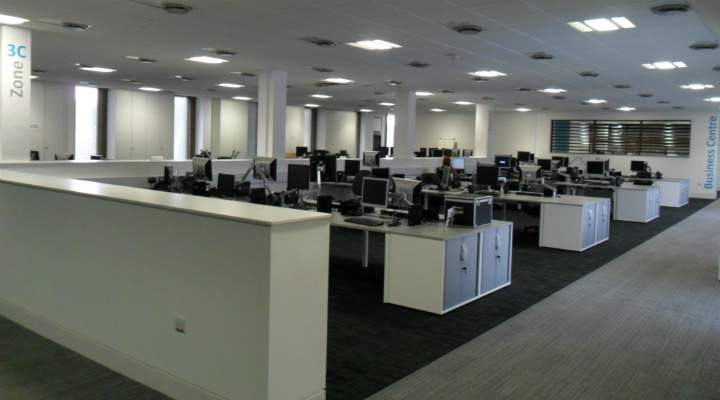Since early 2010 local authorities in the west Midlands have taken steps to deliver more than £170m of savings through using their property portfolio more efficiently.
A report by the West Midlands Property Alliance (WMPA) shares some of the achievements to date of the £2m funding regional efficiency programme. Here are five measures that these local authorities are taking to make sure that their estates are being used efficiently:
Reviewing the property portfolio
Staffordshire County Council had already made savings of £0.25 million per annum by moving out of 17 separate properties into two adjoining buildings.
However, it realised that further savings could be made and along with all eight district councils the county carried a strategic property review that identified more than 100 potential sites for co-working. This was later narrowed down to the top 25 sites that appeared to provide the best opportunities.
The outline business case identified that £19.5m could be generated in capital receipts from property sales, with annual revenue savings of up to £2m.
The programme could also reduce floor space, equivalent to the size of about four football pitches. The projects identified by the review are being delivered through district property boards.
 Staffordshire councils released the equivalent of four football pitches in floorspace as a result of the programme
Staffordshire councils released the equivalent of four football pitches in floorspace as a result of the programme
Measuring how effectively estates are used
Through running a Total Place pilot for the government, Worcestershire County Council developed a methodology for mapping the public sector estate.
Along with the Government Property Unit, it set up a number of workshop sessions across the region to help authorities and their partners with the process of asset mapping and identifying rationalisation and collaboration opportunities. These sessions also covered issues associated with data collection, such as confidentiality and database compatibility.
The workshops helped to broker essential relationships for collaborative working and ensured a consistent approach was followed by authorities in terms of the type and format of data requested from partners.
Exploring new ways of working
Solihull Council identified new ways of working and “going Lean” as two of its top five priorities in its business plan.
Both concepts rely heavily on their success of the introduction of agile working at all office locations across the council and a pilot of a flexible working approach was adopted on one floor at the main council offices to test the concept.
The changes, which including reconfiguring the office layout and the supporting infrastructure for hot desking, proved so successful that they are now being rolled out across all four council key locations.
The resulting 30% reduction in floor space will help to save an estimated £0.15m annually and is receiving a favourable response from staff.
The main council base is now set up as a public sector hub with a bank of desks and IT connection points set aside other public and not-for-profit partner organisations to use.
 Walsall Council’s offices before the £8m investment
Walsall Council’s offices before the £8m investment
Investing to save
Walsall Council’s smarter workplaces programme transformed the way that work is carried out in several council departments.
Some £8m capital investment was spent on refurbishing buildings to create workspaces more suited to flexible working. However, by reducing council offices from 25 to two buildings, the programme is yielding annual savings of some £1m in addition.
Other benefits, include significant carbon emission reductions and improved staff working conditions.
 Walsall Council’s offices after the programme
Walsall Council’s offices after the programme
Working with partner organisations
Herefordshire Public Services is partnership between Herefordshire Council and NHS Herefordshire to deliver services together under one management team.
Following the formation of the partnership, estate reconfiguration is taking place to consolidate corporate administrative facilities and to create joint service centres.
The programme has reduced revenue spend on property by £0.76m per year and generated at least £6.8m of capital receipts.
The overall benefits case for the wider transformation programme is significant and supported by the property transformation will deliver better public services more efficiently.
Learn more about how UK universities are advancing efficiency and value for money in the higher education sector, including work on space utilisation.
For updates and news on efficiency in higher education, subscribe to the Efficiency Exchange.
Read the report from the West Midlands Property Alliance.







